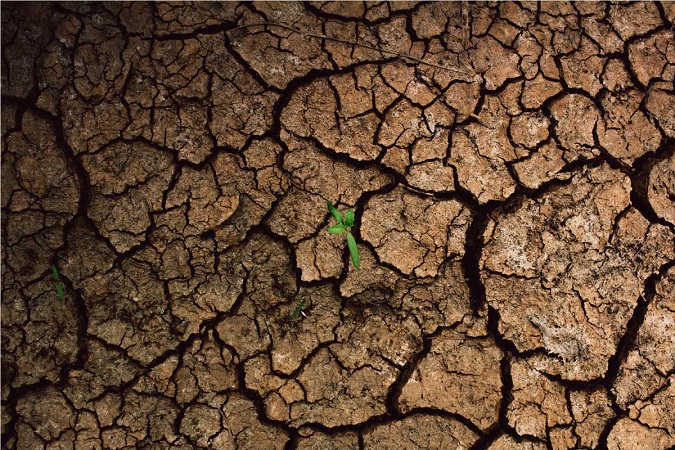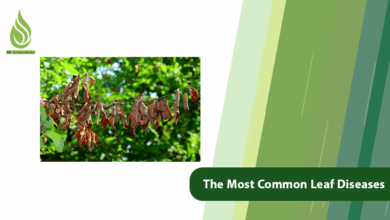
Improve Agriculture Productivity in Water Scarcity and Drought
Drought and water scarcity are challenges faced by farming communities around the world. With climate change and a growing population, the need to manage water resources has become more important than ever. In these conditions, farmers must look for solutions that allow them to get the most productivity from their fields using the least amount of water. In this article, we will introduce effective methods for tackling the challenges of water scarcity and agriculture in drought.
The Impact of Water Scarcity and Drought on Crop Performance and Agriculture
In recent years, drought and water scarcity have become significant threats to the agricultural industry, especially in dry and semi-arid regions. Climate change, rising temperatures, and fluctuating rainfall have intensified these crises, creating many challenges for farmers engaged in agriculture in drought conditions.
Let’s take a look at the main effects of water scarcity on crop performance:
- Reduced Plant Growth: Lack of water affects the process of photosynthesis. When plants don’t have enough water, they can’t produce the energy needed for growth. This ultimately leads to a decrease in both the quantity and quality of the crops.
- Decreased Yield: In conditions of water shortage, the number of fruits and seeds produced drops, resulting in a lower overall yield of the crop.
- Lower Crop Quality: Drought can lead to a decline in the quality of agricultural products. Fruits and vegetables that aren’t properly watered tend to have less flavor and aroma and are less visually appealing.
- Increased Susceptibility to Pests and Diseases: Plants that experience water stress are often weaker and more vulnerable. This increases the likelihood of them being affected by pests and diseases.

Water Management Strategies for Agriculture in Drought
Optimal Use of Water Resources
Optimizing water resources involves two main strategies:
Using Mulch and Cover Crops:
Mulch and cover crops are effective strategies for managing water resources and addressing the challenges of drought farming. These methods help retain soil moisture, improve soil quality, and increase crop productivity. Mulch refers to a layer of material (either natural or synthetic) placed on the soil surface. This material can include soil, straw, dried leaves, plastic, or other substances. Mulch acts as a protective covering and has many positive effects on the soil and plants. Benefits of mulch include reducing water evaporation, temperature control, and weed suppression. Cover crops are plants intentionally grown between or alongside main crops. These can include cover crops, forage plants, or drought-resistant species. The benefits of cover crops include retaining soil moisture, improving soil structure, reducing erosion, and enhancing nutrient absorption.
Using Drip and Smart Irrigation Systems:
Advanced irrigation systems, like drip and sprinkler irrigation, are effective ways to conserve water and improve agriculture in drought. Drip irrigation is a precise method that delivers water directly to the roots of plants in small drops. This system uses hoses and nozzles to distribute water slowly and in a controlled manner. The benefits of drip irrigation include water savings, reduced evaporation, better plant growth, and less weed growth. Sprinkler irrigation, on the other hand, sprays water in fine droplets (similar to natural rain) over the ground. This method helps reduce evaporation and water loss while providing consistent moisture to the soil. It is particularly useful in areas with water shortages or where the soil is hard to penetrate.

Growing Drought-Resistant Plants
Choosing and cultivating plants that are resistant to drought can be an effective strategy for farming and agriculture in drought. To survive in low-water conditions, plants need to adapt. Adaptation refers to the various methods plants use to live and grow when water is scarce, and these adaptations can change their structure, function, and behavior.
- Reducing Water Evaporation:
One adaptation allows plants to close their stomata, which are tiny openings on their leaves that help with gas exchange. By closing these openings, plants reduce water evaporation and prevent water loss. - Developing Deeper Roots:
Some plants have deeper root systems that allow them to reach groundwater. These deep roots can access more water in dry areas. - Producing Special Compounds:
In times of low water, plants can produce a substance called “proline,” which helps retain water in their tissues. Proline helps plants resist water stress better. - Changing Leaf Shape:
Some plants have smaller leaves or waxy surfaces, which help reduce water evaporation and enable them to survive better in dry conditions. - Altering Metabolism:
When faced with water shortages, plants may change their energy production processes to use available resources more efficiently.
These adaptations enable plants to survive and thrive in harsh environments, especially in dry and semi-arid regions. Some suitable plants for drought farming include corn, barley, oregano, aloe vera, cactus, olives, and rosemary. Additionally, trees like pistachios, pomegranates, pines, and drought-resistant varieties of figs, grapes, and almonds are also appropriate for drought agriculture.
Tillage and Soil Quality Improvement for Agriculture in Drought
Maintaining and improving soil quality is very important for dealing with water scarcity and the challenges of drought. High-quality soil is better at retaining water. Let’s look at the key benefits of preserving and enhancing soil quality.
- Using Organic Fertilizers:
Organic fertilizers, like compost and animal manure, improve soil structure, increase water retention capacity, and provide essential nutrients for plants. - Increasing Water Retention Capacity:
Good quality soil can hold more water. By improving the soil structure and increasing the amount of organic matter, more spaces are created within the soil, which helps it retain more water. - Reducing Evaporation and Erosion:
Quality soils often have a layer of organic materials or plants on top. These coverings help reduce water evaporation and prevent soil erosion. They keep moisture from escaping and protect the soil from environmental factors like pests. - Improving Permeability:
High-quality soil has better permeability, which means it can allow water to penetrate deeper. Soils rich in organic matter can transfer water more effectively to deeper layers, reducing the need for surface irrigation. - Providing Nutrients:
Quality soil contains enough nutrients necessary for plant growth. Maintaining soil quality helps supply these nutrients, allowing plants to perform better even under low-water conditions. - Enhancing Microbial Activity:
Soil quality affects its microbial activity. Microorganisms in the soil help break down organic matter, improve soil structure, and increase water retention. Healthy microbial activity boosts soil fertility. - Using Cover Crops:
Planting cover crops between main planting periods helps retain soil moisture and prevent erosion.

Proper tillage and soil resource management help maintain and improve soil quality, preventing negative impacts on agriculture during droughts. The most important tillage techniques for improving soil conditions during dry periods include:
- Mulching:
Mulching means covering the soil surface with organic or inorganic materials. This practice reduces water evaporation, keeps the soil moist, and prevents weed growth. - Deep Planting:
Deep planting involves sowing seeds at greater depths in the soil. This method helps plants access underground water sources, making them more resilient to dry conditions. - Intercropping:
Intercropping refers to growing multiple plant species in the same field. This increases root diversity and helps improve soil structure while retaining moisture. - Timely Planting:
Choosing the right time to plant is crucial for making the most of rainfall. Planting when it rains allows crops to better utilize soil moisture. - Water Management:
Implementing water management techniques, such as creating channels and ponds, can help collect and store rainwater.
These techniques assist farmers in optimizing water use and improving soil quality, enabling them to better withstand the challenges of agriculture in drought.
Strengthening Soil with Organic Matter and Drought Management in Agriculture
Enhancing soil with organic matter is an effective farming method to tackle the challenges of agriculture in drought. Organic materials improve soil structure, increase water retention capacity, and provide essential nutrients for plants.
Using organic matter helps the soil hold more water and improves its ability to allow water to flow through. This is particularly important in dry and semi-arid areas where soil is more prone to erosion. Strengthening the soil with organic matter also helps prevent erosion, making it more stable.
In some cases, organic matter can help regulate soil pH, creating better conditions for plant growth. Organic materials contain essential nutrients that plants need. As these materials break down over time, nutrients become available to plants, helping them grow better and perform well.
Methods for using organic matter include applying animal manure, planting cover crops, and using organic mulch. These practices are beneficial for improving soil quality and managing drought effectively.

The Role of Ammonium Sulfate in Increasing Water Retention Capacity
Ammonium sulfate is an important chemical fertilizer that contains nitrogen and sulfur. This fertilizer can help improve the soil’s ability to retain water. The nitrogen in ammonium sulfate boosts microbial activity and helps break down organic matter in the soil. This process creates soil particles of different sizes, which helps form spaces that can hold water.
Ammonium sulfate also increases the cation exchange capacity (CEC) of the soil. When CEC increases, the soil can hold more water, providing more moisture for plants. The nitrogen in ammonium sulfate also stimulates root growth. Stronger and deeper roots can access groundwater, making plants more resilient during dry conditions. This is particularly beneficial for crops like date palms.
Another important feature of ammonium sulfate is its ability to adjust soil pH. Controlling soil pH and preventing alkalinity improves conditions for plants to absorb water and nutrients. By providing nitrogen and sulfur, ammonium sulfate enhances root growth and boosts the soil’s water retention capacity. This enables plants to perform better under low-water conditions, which is crucial for agriculture in drought and makes them more resistant to water stress. Additionally, ammonium sulfate can improve soil structure and increase microbial activity, which helps plants adapt better to water stress.
